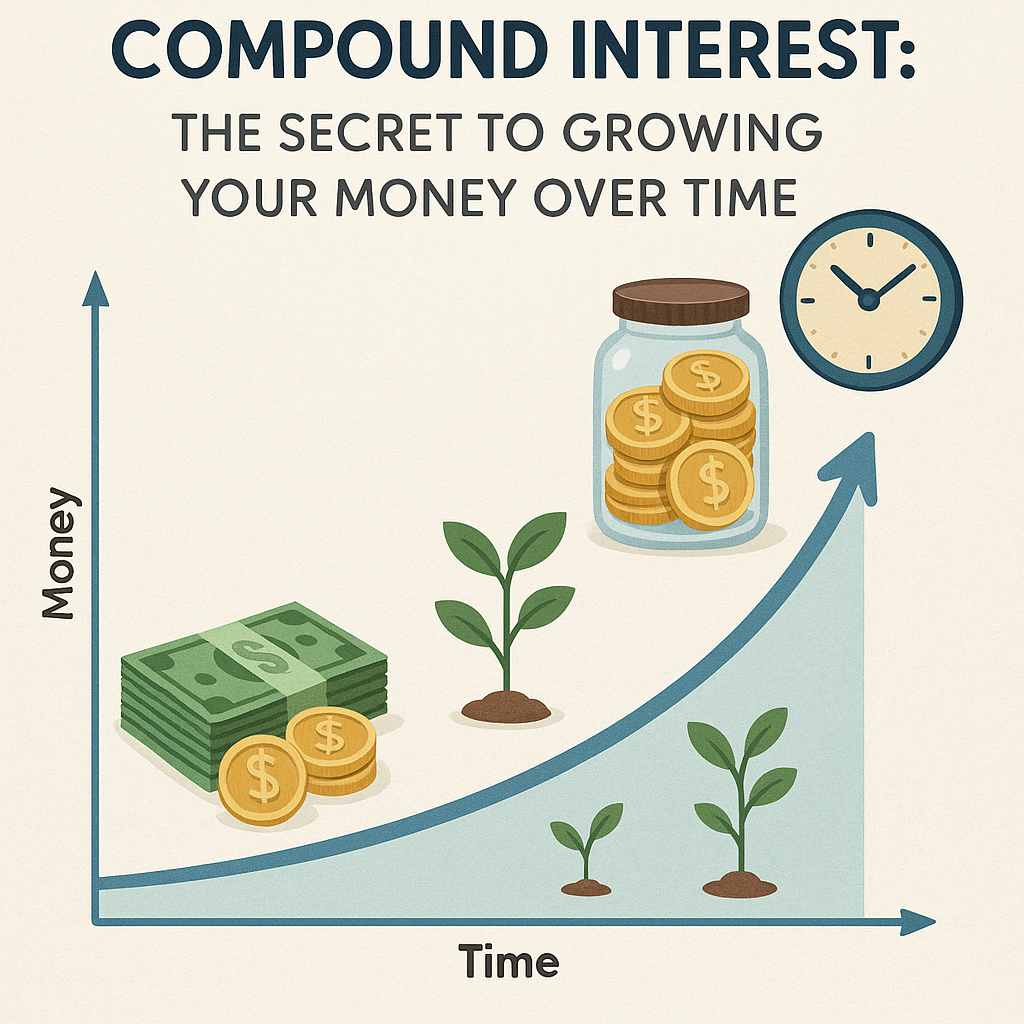If you’re looking to build wealth, reach financial goals, or simply make your money work harder, you need to understand one powerful concept: compound interest.
Often called “the eighth wonder of the world,” compound interest can turn small, consistent savings into a substantial amount over time—even if you’re not a financial expert or high earner. In this article, we’ll explain how it works, why it matters, and how you can use it to your advantage.
What Is Compound Interest?
Compound interest is interest earned on both your original money (the principal) and the interest you’ve already earned. This creates a snowball effect where your money grows faster over time.
In contrast, simple interest only applies to the original amount you deposit.
Example:
Let’s say you invest $1,000 at 5% interest:
- Year 1: You earn $50 in interest → Total: $1,050
- Year 2: You earn 5% on $1,050 = $52.50 → Total: $1,102.50
- Year 3: You earn 5% on $1,102.50 = $55.13 → Total: $1,157.63
And it continues to grow—not just from your deposit, but from previous interest too.
Why Compound Interest Is So Powerful
The secret lies in time. The longer your money compounds, the more exponential your growth.
Imagine Two Investors:
- Emma invests $100/month from age 25 to 35 (10 years only)
- Jake invests $100/month from age 35 to 65 (30 years)
Both earn 7% annually. By age 65:
- Emma’s total: ~$150,000
- Jake’s total: ~$122,000
Emma ends up with more money—even though she invested for fewer years—because she started earlier. That’s the power of compound interest.
How to Calculate Compound Interest
The general formula is:
A = P(1 + r/n)^(nt)
Where:
- A = future value
- P = principal amount
- r = annual interest rate (decimal)
- n = number of times interest is compounded per year
- t = time in years
But don’t worry—you don’t have to do the math. Use online calculators or finance apps to run scenarios.
Where Can You Earn Compound Interest?
You can take advantage of compound interest through:
1. High-Yield Savings Accounts
Great for emergency funds and short-term savings.
2. Certificates of Deposit (CDs)
Offer fixed rates with compounding over a set term.
3. Retirement Accounts (401(k), IRA)
Long-term growth, often invested in mutual funds or index funds.
4. Reinvested Dividends
When you reinvest dividends instead of cashing out, your investment grows faster.
5. Stock Market (through compounding growth and reinvestment)
Although not technically “interest,” gains in stocks compound when reinvested.
Tips to Maximize Compound Interest
1. Start Early
The sooner you begin, the more time compound interest has to work for you.
2. Be Consistent
Even small, regular contributions (like $20/month) add up significantly.
3. Reinvest Earnings
Don’t withdraw your interest or dividends—let them build.
4. Avoid Withdrawals
Interrupting compounding by taking money out reduces long-term growth.
5. Look for Compounding Frequency
The more often interest compounds (daily vs. annually), the better the growth.
Common Myths About Compound Interest
“You need a lot of money to benefit.”
Not true! Time and consistency matter more than large sums.
“It’s only for investors.”
Compound interest applies to savings accounts, too.
“I’ll start later when I earn more.”
The later you start, the harder it is to catch up—even if you invest more.
Final Thoughts: Make Compound Interest Work for You
Compound interest is one of the most powerful tools in personal finance. It rewards consistency, patience, and long-term thinking. Whether you’re saving for a home, retirement, or just want to build wealth gradually, start now—even if you start small.
The best time to invest was yesterday. The second-best time is today.


Sem comentários